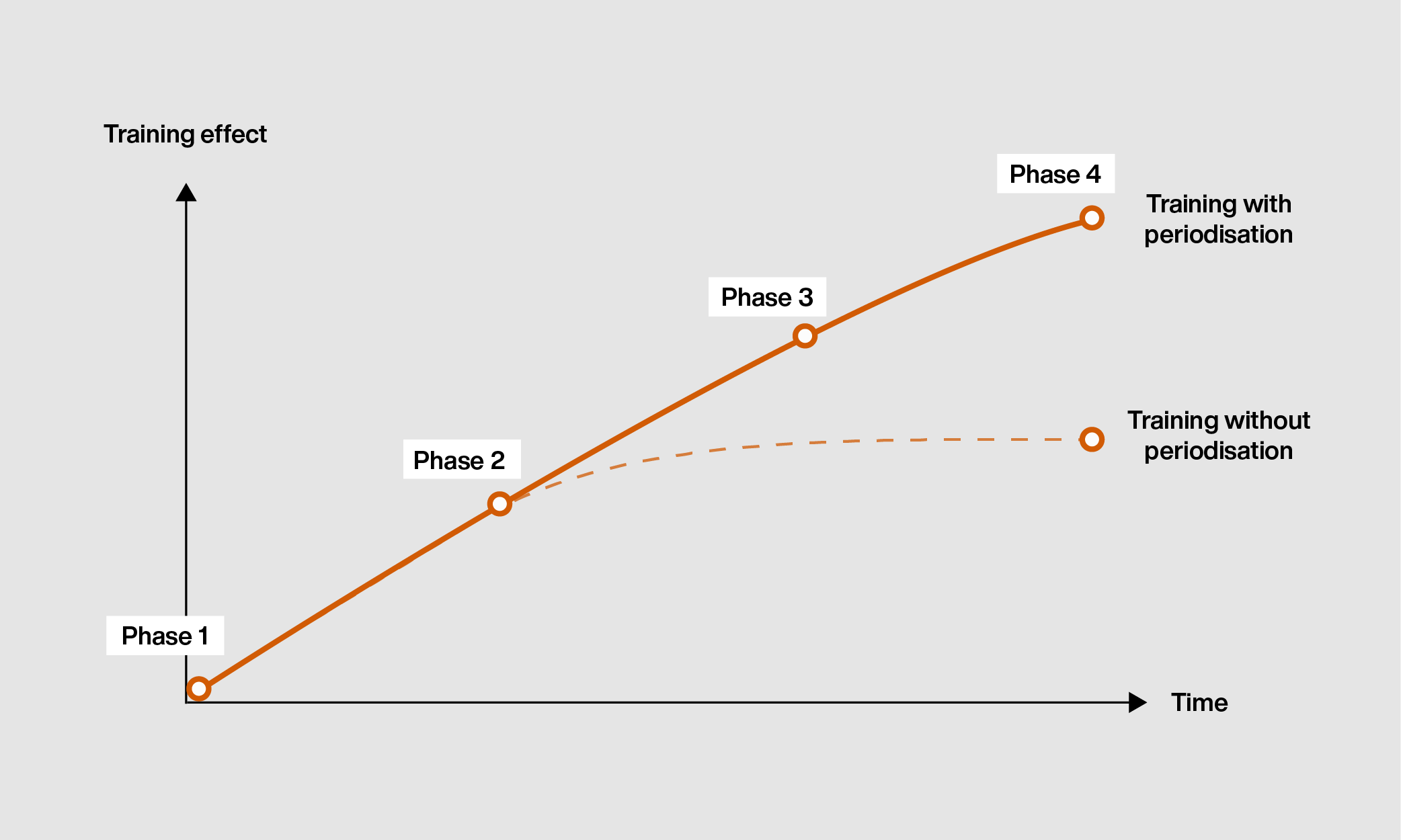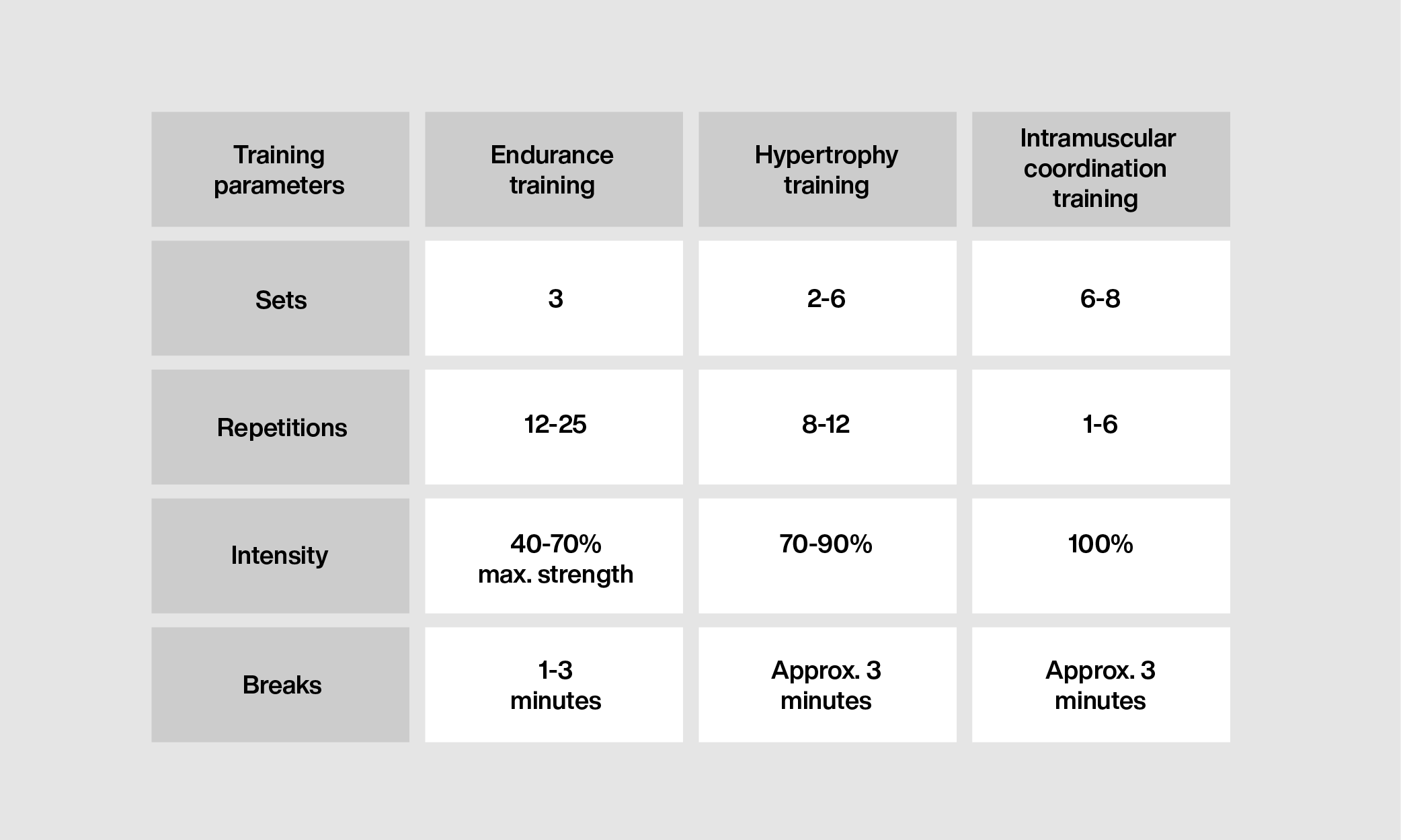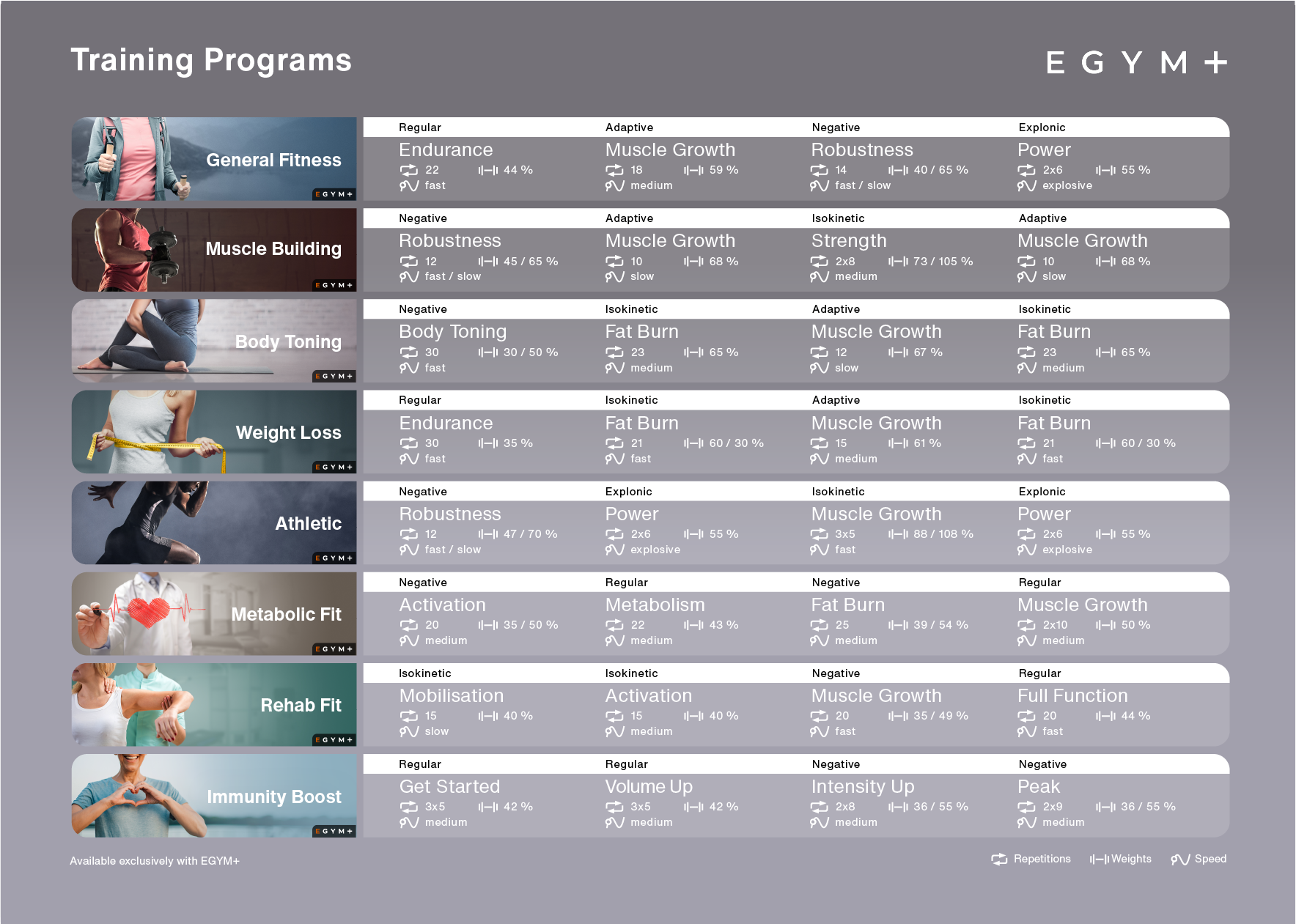Periodisation – for Long-Term Effective Workouts
Anyone who’s signed up at the gym or tried achieving a training goal has faced this problem: At the start of a workout regime, you quickly notice making significant gains building muscles, becoming stronger, or losing weight. After only a few sessions, however, things stagnate and you can no longer make any progress. Why is that? You’re working out just as much as before, but the results of training are decreasing before finally petering out entirely.
Reading Time
About 10 Min
Share What Does “Periodisation” Mean?
If you break up your workouts into phases (periodisation) that regularly stimulate the body in a new way, you will be more successful in the long term than someone whose workout never changes.
To understand how this works, you must be aware of how the body functions and how it responds to and deals with stress:
Beginners make the most workout progress
Our body is in a constant state of adjustment. Compared to someone who has been working out for a long time, beginners make tremendous progress because their muscles and body are not used to exercising and are trying to adapt to higher levels of stress (Fleck, 1999).
Muscles adapt to individual forms of working out
Sports science tells us that muscles adjust to individual exercises after just a few sessions and can then no longer adapt as much as desired. For example, the fact that your muscles no longer get sore after a certain time is proof of this. The muscle has adjusted to being trained and thus no longer adapts as strongly to being stimulated by a workout (Weineck, 2004). This assumption is additionally supported by the general principle of “switching up your workouts”.
Long-term workout progress requires new stimuli on a regular basis
Periodisation (i.e. regular introduction of new workout stimuli in phases) sustains workout progress and prevents plateaus (stagnation). As a result, the muscle cannot adapt to any single type of exercise and must continually adjust. We have put these theoretical findings into practice by implementing them in our strength training machines. After using a workout method for six sessions, the software automatically changes the exercise schedule to prevent the user’s progress from stagnating. It also adds variety to your workouts and keeps you motivated through constantly new challenges.

How Should You Envision Periodisation?
Example:
Traditional periodisation
Endurance → Hypertrophy → Intramuscular coordination
The exercise routine is changed every six weeks. We recommend kicking things off with strength endurance. This will let you gain a solid muscular foundation before switching to hypertrophy or muscle building. Afterward, intramuscular coordination should be trained to increase your maximum strength. This mainly focuses on the simultaneous innervation of many muscle fibers. The various types of working out differ in how the exercises are carried out, the intensity of the exercises, and the number of repetitions.

Example:
Optimum periodisation with EGYM Smart Strength
Strength endurance through negative training → Hypertrophy through adaptive training → Intramuscular coordination through isokinetic training
Working out with EGYM is special because the person using the Smart Strength equipment is not only provided with the standard strength training program but with three other completely new training methods:
- Negative (increases eccentric weight)
- Adaptive (variable resistance based on remaining strength)
- Isokinetic (resistance depends on the pressure applied by the user)
- Explonic (maximum acceleration of constant weight)
These different training methods are combined with classic methods (cf. example “Traditional periodization”) in order to provide a greater range of variety in the individual phases (periods) and to make working out more effective.
To top it all off, the EGYM training methods also save time. The number of sets can be cut by more than half and you can still achieve the same result because the methods are so highly effective.

Conclusion: Periodisation Facilitates Effective Workouts in the Long Run
Periodisation is not only effective, but it is also a basic principle of the workout process if you want to continuously make progress. Yet that’s not all it does. Periodisation adds variety to your workouts and makes them even more fun!
Did You Know About EGYM Activity Levels?
Learn more about what makes working out with EGYM even more challenging and inspiring. For instance, activity levels!
Learn MoreReference
Buford, T.W., Rossi, S.J., Smith, D.B., Warren, A.J. (2007). A comparison of periodization models during nine weeks with equated volume and intensity for strength. J Strength Cond Res.; Vol.21(4): S.1245-50.
Fleck, S.J. (1999). Periodized Strength Training: A Critical Review. Journal of Strength and Conditioning Research, Vol.13(1): S.82–89.
Fröhlich, M., Müller, T., Schmidtbleicher, D. & Emrich. E. (2009). Outcome-Effekte verschiedener Periodisierungsmodelle im Krafttraining. Deutsche Zeitschrift für Sportmedizin, Jahrgang 60, Nr.10: S.307-314.
Peterson, M.D., Dodd, D.J., Alvar, B.A., Rhea, M.R., Favre, M. (2008). Undulation training for the development of hierarchical fitness and improved firefighter job performance. J Strength Cond Res., Vol. 22(5): S.1683-95.
Rhea, M.R., Alderman, B.L. (2004). A meta-analysis of periodized versus non-periodized strength and power training programs. Res Q Exerc Sport.; Vol.75(4): S.413-22.
Weineck, J. (2004). Optimales Training: Leistungsphysiologische Trainingslehre unter besonderer Berücksichtigung des Kinder-und Jugendtrainings (14th ed.). Erlangen: Spitta Verlag GmbH & Co. KG.
